Paradigm Founder Series 80F Loudspeaker Review
Paradigm from Canada is gaining more and more ground in Europe. With plenty of quality and charm. The wide range also includes affordable floor-standing speakers for sophisticated demands, like the Founder 80F.
By Lothar Brandt
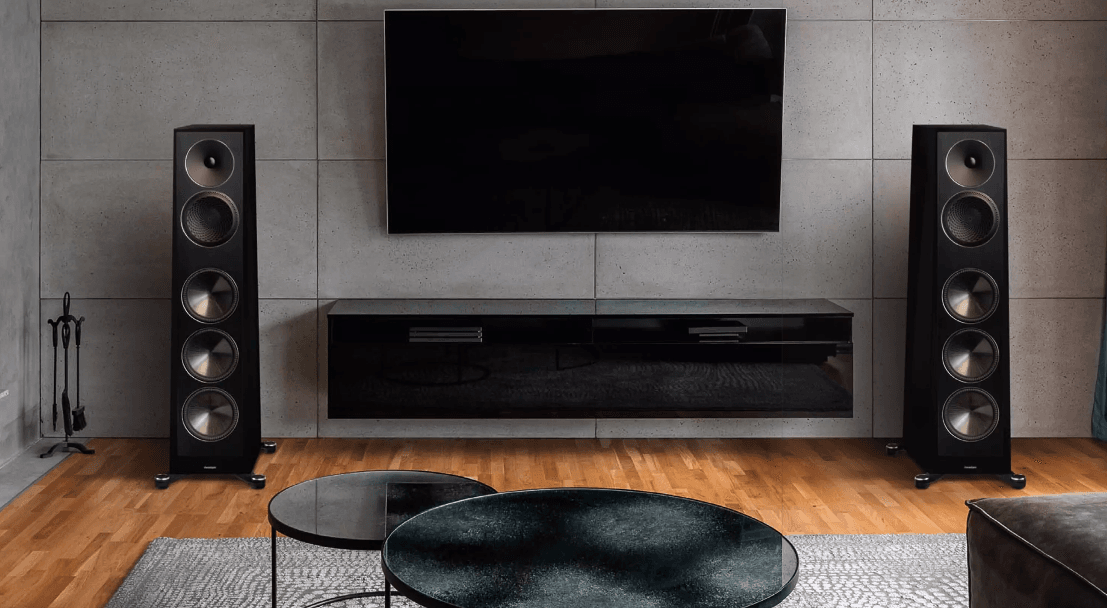
Neil Young, Joni Mitchell, Gordon Lightfoot, Leonard Cohen, or Rush: After a brief reflection, every music fan can probably name a handful of Canadian pop/rock stars. With hi-fi manufacturers or parent companies, it might take a bit longer. OK, there’s the Lenbrook Group with the brands PSB, Bluesound, and NAD; API with Mirage and Energy; Simaudio with Moon; plus Classé and Totem Acoustics: Some insider knowledge is probably needed to get to five. Since a few months ago, 7Review readers might be quicker to bring together half a dozen. Because since the test of the phenomenal Performa 9H (pair price around $42,000), the manufacturer Paradigm from Toronto has rapidly gained some recognition.
WIDE-RANGING, SLIMLY DESIGNED
From Paradigm’s somewhat more affordable “Founder” series, 7Review followed up with the Founder 120H ($12,700). What the already quite wide-ranging speaker specialists can deliver for very little money had already been shown by the Monitor SE Atom. And now, the Founder 80F for $5,200 is set to further fuel the fire in and for the Canadian style. It is the smallest floor-standing speaker within the Founder family, equipped with four drivers distributed over two and a half ways on the slightly trapezoidal baffle just under one meter high.
The two 152-millimeter woofers move their carbon membranes in parallel up to about 500 Hertz, where a second-order crossover (12 decibels per octave slope) disconnects them. The two “Unibody” cones—typically without central dust caps—are supposed to handle particularly large excursions without distortions thanks to Active Ridge Technology (ART), isolated from the baffle by “Shock Mount,” and supported in the deep bass by a downfiring reflex port. For the necessary distance to the floor, there are 45-degree angled, tip-over safe plastic supports, optionally equipped with pucks or needle-sharp spikes.
The equally sized mid-woofer allows its aluminum-magnesium alloy (AL-MAG) membrane to move up to about 1800 Hertz. In front of it is the Paradigm-typical perforated grille, the Perforated Phase Aligning Lens (PPA). This cone is also disconnected by a second-order crossover from the tweeter dome, which resides in the midst of a circular waveguide, likewise phase-corrected and protected by a PPA lens. All this is mounted vertically on a 2.5-centimeter thick front baffle, which can also be concealed with acoustically transparent covers. It sits in front of a 1.9-centimeter thick, internally braced MDF cabinet, available in black piano lacquer, black or brown walnut finish, or cherry wood tone. Canada fans might possibly miss maple, but such an individual maple finish would then—for an additional charge—be reserved for the more expensive Persona series.
Which brings us to the nomenclature of the Canadians with the largest anechoic chamber in North America after the US military: An “H” appended after the number stands across the series for Hybrid and means partial active operation, where in-house amplifiers along with room correction electronics control the bass—after all, Anthem, which emerged from Sonic Frontiers, also resides under the huge company umbrella, just like electrostatics specialist Martin Logan. A “B” at Paradigm stands for Bookshelf like compact speakers, and a “C” refers to Center Speakers of the Canadians who are also very strong in home cinema. And the “F,” as here with the Founder 80F, abbreviates “Floorstanding” as floor-standing speaker.
We initially placed our well-broken-in pair very close to the wall in the listening room, after all, Paradigm also shows the 80F this way in a living room in “Canadian style”—see page 18. This also worked without booming problems in good old Germany. Indeed, the 80F, like its big sister 120H, turned out to be quite generous in the upper bass range, so we ultimately positioned them very freely in the room. There, the wonderfully warm mids and very peaceful highs—which also quickly emerged—could, literally, play more freely. At the very solid bi-wiring terminal, connected with neat bridges, the jury connected the proven reference amplifier T+A PA 3100 HV using the excellent Stockfisch speaker cables. The powerful unit proved once again to be a good choice, also because the Paradigm certainly made demands regarding supplied currents.
But first, it was time to explore their abilities as subtle performers. And what would be better suited for that than Joni Mitchell’s “Coyote” from her grandiose LP “Hejira” from 1976? The distinctly driving fretless bass by Jaco Pastorius, the flowing lead guitar by Larry Carlton, and Joni’s so variable mezzo: The Paradigm rendered that very accurately, already with sonorous fundamental tone foundation even at low levels.
Same year, different voice: Mitchell’s compatriot Gordon Lightfoot released his strong song “The Wreck Of The Edmund Fitzgerald” on the LP “Summertime Dream.” Later ruthlessly compressed on CD, the Founder 80F carved out the fine internal dynamics in Lightfoot’s baritone and his backing band from LP with great sensitivity.
GENTLY TUNED, BRUTALLY LOUD
And with even more feeling, it transmitted Leonard Cohen’s gripping farewell hymn “You Want It Darker,” released shortly before his death in 2016. The pitch-black spoken singing, the Jewish cantor, the synagogue choir: All that penetrated deeply into the listener’s soul with powerful emotion. But in all examples, the 80F showed its outstanding vocal abilities. Wonderful how the vocals, of whatever kind, detached themselves from the speakers, how prominently they stood in the room. The overall tuning lies in the gentle, scream-free range, with rather mild uppermost highs.
Now it was time to turn up the volume. The tester always likes to do that with the Canadian band April Wine, who recorded the monster song “Say Hello” on “Harder … Faster” in 1979, with extremely crisp drums (please no dynamically compromised remaster CD, but vinyl), great vocals, and strong guitar parts. The T+A amplifier could pump, pump more, and pump even more: The Paradigm hurled out almost brutal levels without the diaphragms flinching. One wouldn’t expect such level stability from the slim Canadian. But perhaps that’s exactly part of its style.

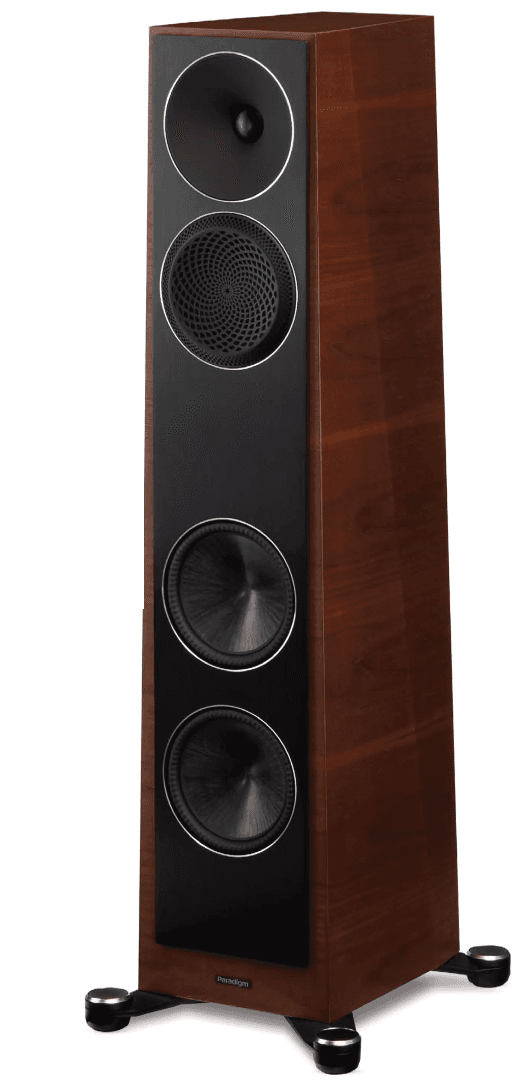
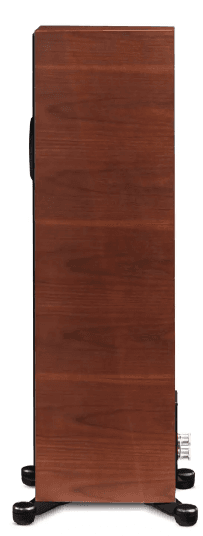
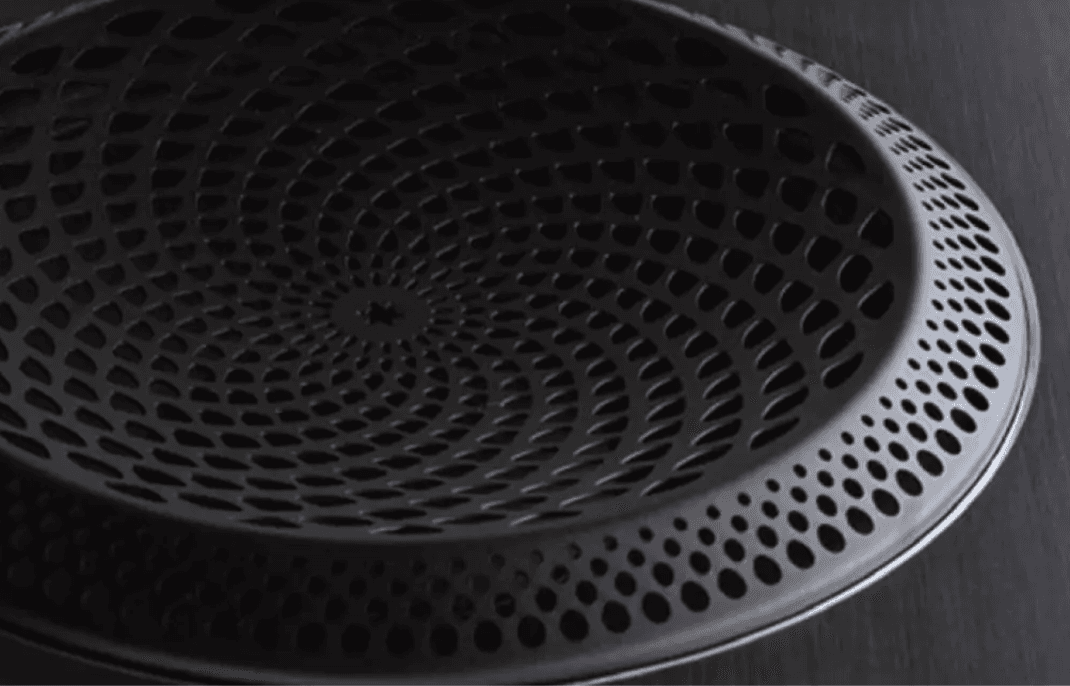

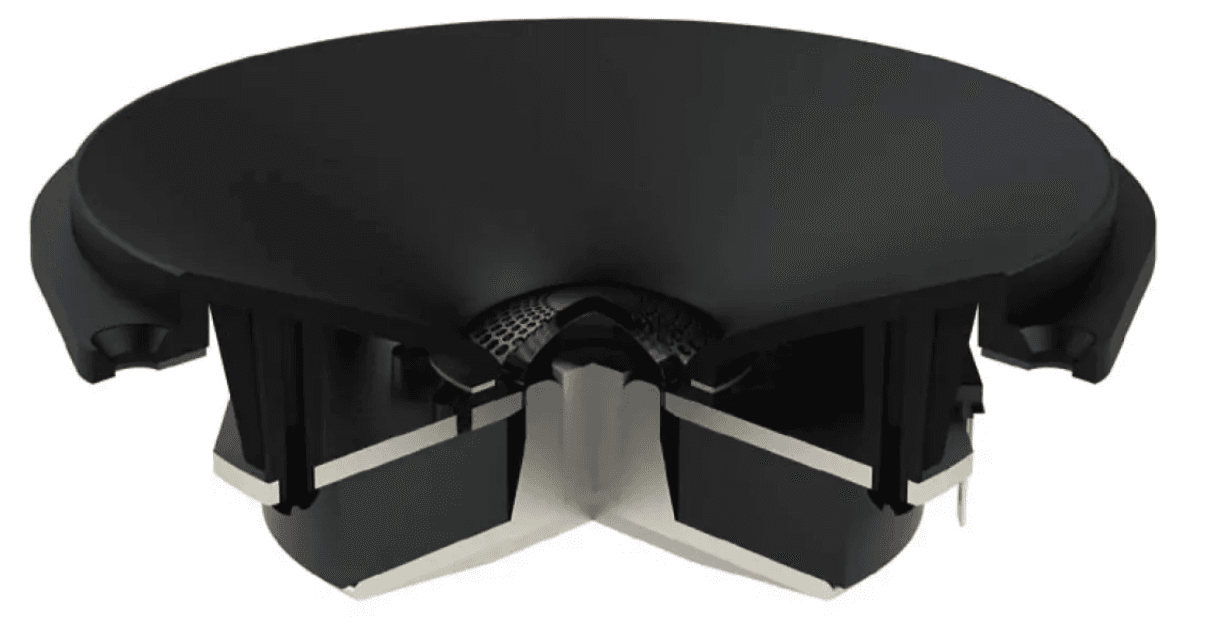
MEASUREMENT LAB

Frequency response with slight midrange dip, slightly emphasized upper bass and treble from 4 kHz. Axial and 30-degree lateral frequency responses are almost identical—wide dispersion. Interferences are noticeable at vertically offset listening positions. Construction: Floor-standing speaker with downfire port; both woofers also reproduce midrange quietly, the midrange driver plays broadly between 100 and 1800 Hz (2.5-way). Distortion: Extremely low-distortion bass, astonishing 107 dBSPL are possible despite good low-end extension (46/34 Hz -3/-6 dB). Amplifier recommendation: From 50 W/4 Ω (100 dBSPL), for maximum volume, 265 W at 4 Ω are needed.
Audio Score 6.5
Specs
- Distributor: Paradigm Audio Vertriebs GmbH
- Price (Pair): 4,700 Euros (~$5,120 USD)
- Warranty: 3 years
- Dimensions (W x H x D): 29.8 x 97.1 x 35.6 cm
- Weight: 23.6 kg
- Finish: Veneer, Lacquer
- Colors: Black, Walnut, Cherry, etc.
- Design Principle: 2 ½ way bass reflex
- Room Adaptation: No
- Special Features: PPA lenses
Verdict
Once again, Paradigm has convinced. With the Founder 80F, the Canadians position themselves in the tightly packed upper mid-range among the top group. If you grant this floor-standing speaker the appropriate, powerful amplifier, it reciprocates with warm tonal colors and excellent vocal reproduction. And it plays undistorted even at levels that let it easily pass as a wolf in sheep’s clothing.
Audiogram (Review Summary):
Pros:
- Smooth tuning, excellent vocal reproduction, can play very loud
Cons:
- Not overly brilliant, requires strong amplifiers
Evaluation:
- Neutrality (2x weight): 100 → 10/10
- Detail Accuracy (2x weight): 95 → 9.5/10
- Localization (Sound Positioning): 100 → 10/10
- Spatiality: 95 → 9.5/10
- Microdynamics: 100 → 10/10
- Maximum Volume: 105 → 10/10 (scaled maxed at 10)
- Bass Quality: 95 → 9.5/10
- Bass Depth: 95 → 9.5/10
- Build Quality: Outstanding → 10/10
Final Score:
- Sound Rating: 98 points → 9.8/10
- Price/Performance: Very Good – Outstanding








Buying the review pair at half /retail (if not free) somehow brings a shadow over the otherwise good review, but obviously lacking now in objectivity, given the « gift ».